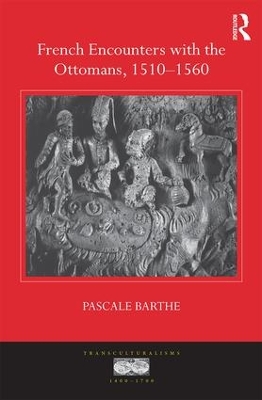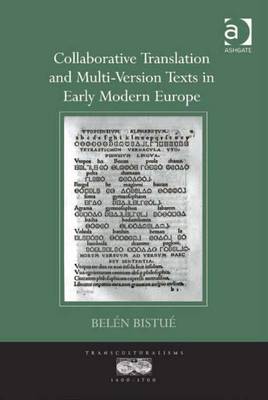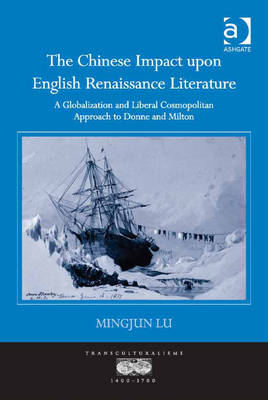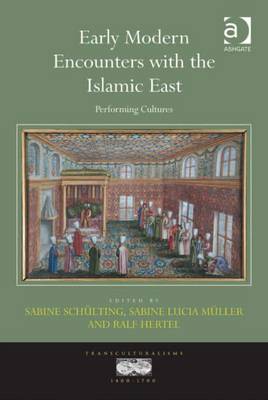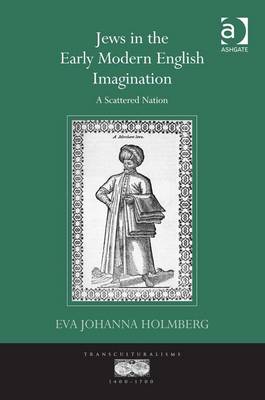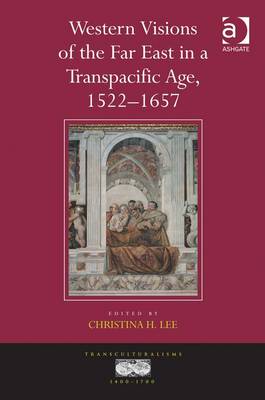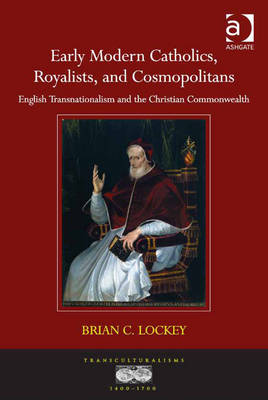Transculturalisms, 1400-1700
8 total works
Collaborative Translation and Multi-Version Texts in Early Modern Europe
by Belen Bistue
Focusing on team translation and the production of multilingual editions, and on the difficulties these techniques created for Renaissance translation theory, this book offers a study of textual practices that were widespread in medieval and Renaissance Europe but have been excluded from translation and literary history.
The author shows how collaborative and multilingual translation practices challenge the theoretical reflections of translators, who persistently call for a translation text that offers a single, univocal version and maintains unity of style. In order to explore this tension, Bistue discusses multi-version texts, in both manuscript and print, from a diverse variety of genres: the Scriptures, astrological and astronomical treatises, herbals, goliardic poems, pamphlets, the Greek and Roman classics, humanist grammars, geography treatises, pedagogical dialogs, proverb collections, and romances. Her analyses pay careful attention to both European vernaculars and classical languages, including Arabic, which played a central role in the intense translation activity carried out in medieval Spain.
Comparing actual translation texts and strategies with the forceful theoretical demands for unity that characterize the reflections of early modern translators, the author challenges some of the assumptions frequently made in translation and literary analysis. The book contributes to the understanding of early modern discourses and writing practices, including the emerging theoretical discourse on translation and the writing of narrative fiction--both of which, as Bistue shows, define themselves against the models of collaborative translation and multi-version texts.
The Chinese Impact upon English Renaissance Literature examines how English writers responded to the cultural shock caused by the first substantial encounter between China and Western Europe. Author Mingjun Lu explores how Donne and Milton came to be aware of England's participation in `the race for the Far East' launched by Spain and Portugal, and how this new global awareness shaped their conceptions of cultural pluralism. Drawing on globalization theory, a framework that proves useful to help us rethink the literary world of Renaissance England in terms of global maritime networks, Lu proposes the concept of `liberal cosmopolitanism' to study early modern English engagement with the other. The advanced culture of the Chinese, Lu argues, inculcated in Donne and Milton a respect for difference and a cosmopolitan curiosity that ultimately led both authors to reflect in profound and previously unexamined ways upon their Eurocentric and monotheistic assumptions. The liberal cosmopolitan model not only opens Renaissance literary texts to globalization theory but also initiates a new way of thinking about the early modern encounter with the other beyond the conventional colonial/postcolonial, nationalist, and Orientalist frameworks. By pushing East-West contact back to the period in 1570s-1670s, Lu's work uncovers some hitherto unrecognized Chinese elements in Western culture and their shaping influence upon English literary imagination.
Early Modern Encounters with the Islamic East
An exploration of early modern encounters between Christian Europe and the (Islamic) East from the perspective of performance studies and performativity theories, this collection focuses on the ways in which these cultural contacts were acted out on the real and metaphorical stages of theatre, literature, music, diplomacy and travel. The volume responds to the theatricalization of early modern politics, to contemporary anxieties about the tension between religious performance and belief, to the circulation of material objects in intercultural relations, and the eminent role of theatre and drama for the (re)imagination and negotiation of cultural difference. Contributors examine early modern encounters with and in the East using an innovative combination of literary and cultural theories. They stress the contingent nature of these contacts and demonstrate that they can be read as moments of potentiality in which the future of political and economic relations - as well as the players' cultural, religious and gender identities - are at stake.
The focus of this study is the exciting period of French overseas exploration directly following the stagnation caused by the Wars of Religion. The book examines the early period of French involvement in Northeastern America through readings of key texts, principally travel and missionary accounts. Among the works examined are travel writings by Marc Lescarbot (Histoire de la Nouvelle-France) and Samuel de Champlain (Voyages), and missionary works by Gabriel Sagard (Dictionnaire de la Langue Huronne, Histoire du Canada), Jean de Brebeuf, and Paul le Jeune (early Relations de Jesuites). Through a careful examination of these texts, the author discerns a French "rewriting of the self" in relation to the American other, represented by both land and people. America, Brazeau argues, allowed a consolidation of past markers of identity, and forced a radical rereading of others, due to the difficulties presented by the Canadian wilderness and its natives.
Writing a New France, 1604-1632 sheds fresh light on a significant moment in French colonial history while providing an innovative contribution to the understanding of early modern French identity and cultural contact.
Based on travel writings, religious history and popular literature, Jews in the Early Modern English Imagination explores the encounter between English travellers and the Jews. While literary and religious traditions created an image of Jews as untrustworthy, even sinister, travellers came to know them in their many and diverse communities with rich traditions and intriguing life-styles. The Jew of the imagination encountered the Jew of town and village, in southern Europe, North Africa and the Levant. Coming from an England riven by religious disputes and often by political unrest, travellers brought their own questions about identity, national character, religious belief and the quality of human relations to their encounter with 'the scattered nation'.
Western Visions of the Far East in a Transpacific Age, 1522-1657
Bringing to bear the latest developments across various areas of research and disciplines, this collection provides a broad perspective on how Western Europe made sense of a complex, multi-faceted, and by and large Sino-centered East and Southeast Asia. The volume covers the transpacific period--after Magellan's opening of the transpacific route to the Far East and before the eventual dominance of the region by the British and the Dutch. In contrast to the period of the Enlightenment, during which Orientalist discourses arose, this initial period of encounters and conquest is characterized by an enormous curiosity and a desire to seize--not only materially but intellectually--the lands and peoples of East Asia.
The essays investigate European visions of the Far East--particularly of China and Japan--and examine how and why particular representations of Asians and their cultural practices were constructed, revised, and adapted. Collectively, the essays show that images of the Far East were filtered by worldviews that ranged from being, on the one hand, universalistic and relatively equitable towards cultures to the other extreme, unilaterally Eurocentric.
Early Modern Catholics, Royalists, and Cosmopolitans considers how the marginalized perspective of 16th-century English Catholic exiles and 17th-century English royalist exiles helped to generate a form of cosmopolitanism that was rooted in contemporary religious and national identities but also transcended those identities.
Author Brian C. Lockey argues that English discourses of nationhood were in conversation with two opposing 'cosmopolitan' perspectives, one that sought to cultivate and sustain the emerging English nationalism and imperialism and another that challenged English nationhood from the perspective of those Englishmen who viewed the kingdom as one province within the larger transnational Christian commonwealth.
Lockey illustrates how the latter cosmopolitan perspective, produced within two communities of exiled English subjects, separated in time by half a century, influenced fiction writers such as Sir Philip Sidney, Edmund Spenser, Anthony Munday, Sir John Harington, John Milton, and Aphra Behn. Ultimately, he shows that early modern cosmopolitans critiqued the emerging discourse of English nationhood from a traditional religious and political perspective, even as their writings eventually gave rise to later secular Enlightenment forms of cosmopolitanism.
